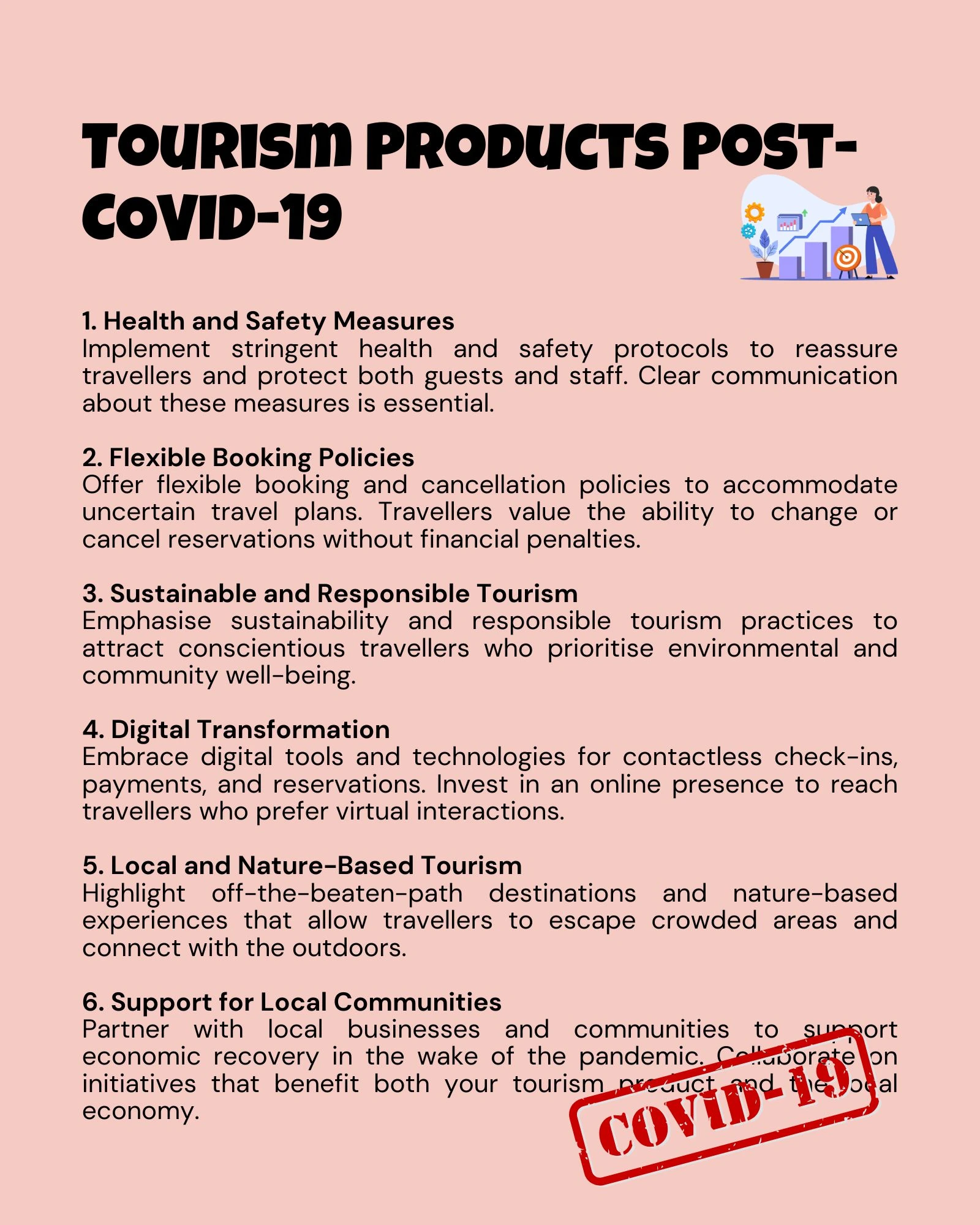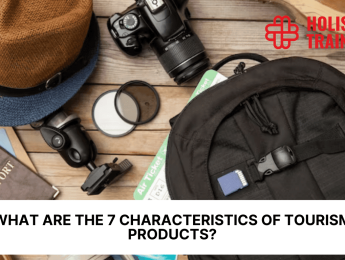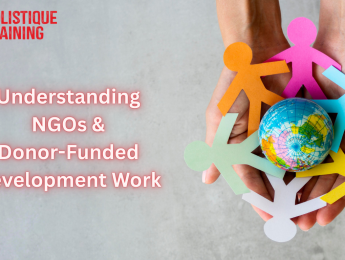- Table of Contents
- Introduction
- What Is a Tourism Product & What Is Its Function?
- Entertainment and Enjoyment
- Education
- Economic Growth
- Cultural Exchange
- Environmental Conservation
- What Are the 7 Tourism Products?
- 1. Natural Tourism Products
- 2. Cultural Tourism Products
- 3. Adventure Tourism Products
- 4. Leisure Tourism Products
- 5. Urban Tourism Products
- 6. MICE Tourism Products
- 7. Health and Wellness Tourism Products
- Components of a Tourism Product
- 1. Destination
- 2. Accommodation
- 3. Transportation
- 4. Activities and Experiences
- 5. Food and Dining
- 6. Infrastructure and Services
- 7. Marketing and Promotion
- Characteristics of a Tourism Product
- 1. Uniqueness
- 2. Authenticity
- 3. Sustainability
- 4. Flexibility
- 5. Quality Service
- 6. Emotional Appeal
- 7. Accessibility
- How to Create a Tourism Product: Key Steps
- Step 1: Market Research
- Step 2: Destination Development
- Step 3: Product Design
- Step 4: Partnership and Collaboration
- Step 5: Sustainability Planning
- Step 6: Quality Assurance
- Step 7: Marketing and Promotion
- Step 8: Booking and Reservation System
- Step 9: Training and Customer Service
- Step 10: Feedback and Improvement
- How to Effectively Promote Your Tourism Product
- 1. Digital Presence
- 2. Content Marketing
- 3. Social Media Marketing
- 4. Email Marketing
- 5. Collaborations and Influencers
- 6. Search Engine Optimisation (SEO)
- 7. Online Reviews and Ratings
- 8. Paid Advertising
- 9. Local Partnerships
- 10. Feedback and Adaptation
- Tourism Products Post-COVID-19
- 1. Health and Safety Measures
- 2. Flexible Booking Policies
- 3. Sustainable and Responsible Tourism
- 4. Digital Transformation
- 5. Local and Nature-Based Tourism
- 6. Support for Local Communities
- The Art of Culinary Tourism
- Exploring Local Gastronomy
- Culinary Tourism as an Immersive Experience
- Promoting Sustainable and Responsible Dining
- The Rise of Virtual Tourism
- The Digital Exploration of Real-World Destinations
- The Appeal of Virtual Tourism
- Implications for Tourism Products
- Conclusion
Introduction
When it comes to the world of tourism, creating a successful product isn't just about booking hotels and arranging transportation. It's about crafting an experience that captivates travellers and leaves them with memories to cherish. This comprehensive guide will explore the nuances of creating a successful tourism product. From understanding its function to adapting to the challenges of a post-COVID-19 world, we'll cover it all.
What Is a Tourism Product & What Is Its Function?
At its core, a tourism product is more than just a hotel room or a scenic location; it is an experience. It encompasses everything a traveller encounters from when they begin planning their trip to when they return home. A well-designed tourism product should serve several functions:
Entertainment and Enjoyment
Tourism products should offer a delightful and memorable experience for travellers. Whether it's a visit to a historical site, a thrilling adventure, or a peaceful beachfront retreat, the primary goal is to create enjoyment.
Education
Many tourists seek to expand their horizons and learn about new cultures, histories, and environments. A tourism product should provide educational opportunities that enrich the traveller's knowledge.
Economic Growth
Tourism products can stimulate the local economy by creating jobs, supporting local businesses, and generating revenue through visitor spending.
Cultural Exchange
Tourism fosters cultural exchange and understanding between people from different backgrounds. A tourism product can promote cross-cultural interactions, leading to a more interconnected world.
Environmental Conservation
Sustainable tourism products contribute to the preservation of natural environments and cultural heritage. They promote responsible practices that protect fragile ecosystems and historical sites.
What Are the 7 Tourism Products?
To create a successful tourism product, it's essential to understand the seven fundamental types of tourism products. Each type caters to a different set of traveller interests and desires:
1. Natural Tourism Products
These products revolve around natural attractions such as national parks, beaches, forests, and wildlife reserves. Travellers seek to connect with nature and experience its beauty and tranquillity.
2. Cultural Tourism Products
Cultural products showcase the heritage, traditions, and history of a destination. They include museums, historical sites, festivals, and cultural performances.
3. Adventure Tourism Products
Adventure products cater to thrill-seekers and adrenaline junkies. Activities like hiking, mountain biking, rock climbing, and water sports fall under this category.
4. Leisure Tourism Products
Leisure products are designed for relaxation and rejuvenation. They include resorts, spa retreats, and cruises, allowing travellers to unwind and escape from their daily routines.
5. Urban Tourism Products
Urban products focus on cities and metropolitan areas. Travellers explore the vibrancy of city life, including shopping, dining, cultural events, and entertainment.
6. MICE Tourism Products
MICE stands for Meetings, Incentives, Conferences, and Exhibitions. These products cater to corporate events, conferences, and business travellers.
7. Health and Wellness Tourism Products
These products emphasise health and well-being, offering services like yoga retreats, wellness spas, and medical tourism.
Creating a tourism product often involves combining elements from these categories to create a well-rounded and attractive offering. For instance, a package might include a nature hike followed by a cultural immersion experience in a local village.
Components of a Tourism Product
To create a successful tourism product, you must understand its key components. These elements work together to shape the overall experience for travellers:
1. Destination
The location itself is a vital component. It includes natural features, historical sites, cultural attractions, and local communities.
Component | Significance |
Destination | The core of the tourism product, offering unique attractions and experiences. |
Accommodation | Provides travellers with a place to stay, greatly influencing comfort and experience. |
Transportation | Enables travellers to reach their destination conveniently, impacting accessibility. |
Activities | The heart of the experience offering a wide range of opportunities for enjoyment and learning. |
Food and Dining | Enhances the understanding of a destination's culture and contributes to overall enjoyment. |
Infrastructure | Ensures a traveller's sense of security and comfort with essential services like healthcare. |
Marketing | Attracts travellers to the destination and showcases unique aspects of the tourism product. |
Table 1: Key components of a tourism product
2. Accommodation
The choice of lodging, whether it's a hotel, hostel, vacation rental, or camping site, greatly influences the traveller's comfort and overall experience. Accommodations come in various shapes and sizes, catering to different budgets and preferences.
3. Transportation
Efficient transportation options, whether by air, land, or sea, ensure travellers can reach the destination conveniently. The ease of reaching the destination can significantly impact a traveller's decision.
4. Activities and Experiences
The heart of a tourism product lies in the activities and experiences offered. This can range from guided tours and cultural workshops to adventure sports and culinary adventures. Offering a diverse range of activities ensures there's something for every traveller.
5. Food and Dining
Culinary experiences are a significant part of any trip. Local cuisine and dining options can enhance a traveller's understanding of a destination's culture. Dining becomes an experience in itself, introducing travellers to new flavours and traditions.
6. Infrastructure and Services
The availability of essential services such as healthcare, safety, and communication infrastructure contributes to a traveller's sense of security and comfort. A well-developed infrastructure can make a destination more appealing.
7. Marketing and Promotion
Effective marketing and promotion are essential to attract travellers to the destination and showcase the unique aspects of the tourism product. A strategic marketing plan can significantly impact the visibility and success of the product.
Characteristics of a Tourism Product
Understanding the key characteristics of a successful tourism product is crucial for its development and marketing. These characteristics set it apart from other travel offerings:
1. Uniqueness
A tourism product should offer something distinct and special that cannot be easily replicated elsewhere. This uniqueness creates a sense of novelty and curiosity among travellers. For instance, a guided tour that provides access to hidden gems or exclusive experiences can make a product stand out.
2. Authenticity
Travellers seek genuine experiences that connect them with the local culture and traditions. Authenticity adds depth and meaning to their journey. Providing opportunities for travellers to interact with locals, learn about their customs, and immerse themselves in the destination's way of life can enhance authenticity.
Characteristics | Description |
Uniqueness | Offers a distinct experience |
Authenticity | Reflects local culture genuinely |
Sustainability | Focuses on responsible practices |
Flexibility | Allows for personalised experiences |
Quality service | Provides exceptional customer care |
Emotional Appeal | Evokes lasting travel memories |
Accessibility | Ensure easy access for all travellers |
Table 2: Characteristics of a tourism product
3. Sustainability
Sustainable practices and responsible tourism are increasingly important. A tourism product that respects the environment and supports local communities attracts conscientious travellers. Promoting eco-friendly activities and supporting local artisans or businesses can contribute to sustainability.
4. Flexibility
Travellers have diverse needs and preferences. A successful tourism product should allow for customisation, enabling travellers to tailor their experiences to suit their interests. Offering different packages or options can cater to a wider audience.
5. Quality Service
Exceptional customer service ensures that travellers feel valued and cared for during their journey. Quality service can lead to positive reviews and repeat business. Well-trained staff who are knowledgeable about the destination and its offerings can enhance the traveller's experience.
6. Emotional Appeal
A successful tourism product should evoke emotions and create lasting memories. Travellers often remember how a destination made them feel more than specific details. Designing emotionally engaging experiences, such as a surprise sunset picnic or a touching cultural performance, can leave a lasting impact.
7. Accessibility
Accessibility is crucial, both in terms of physical access and affordability. A tourism product should be accessible to a broad range of travellers, including those with different budgets and physical abilities. Providing options for various types of travellers, such as families, solo adventurers, and couples, can increase accessibility.
How to Create a Tourism Product: Key Steps
Creating a successful tourism product involves careful planning and execution. Here are the key steps to guide you through the process:
Step 1: Market Research
Begin by understanding your target market. Conduct surveys, analyse travel trends, and identify the preferences and interests of potential travellers. This research forms the foundation of your product.
Step 2: Destination Development
Select or design a destination that aligns with your target market's interests. Consider factors such as geography, culture, and available attractions. Ensure the destination offers a unique and authentic experience.
Step 3: Product Design
Create a detailed itinerary or package that includes accommodation, transportation, activities, and dining options. Ensure the product caters to various traveller preferences, from budget to luxury.
Step 4: Partnership and Collaboration
Collaborate with local businesses, service providers, and attractions to build a network of support for your tourism product. Strong partnerships can enhance the overall quality of the experience.
Step 5: Sustainability Planning
Incorporate sustainable practices into your product design, such as minimising environmental impact, supporting local communities, and promoting responsible tourism. Sustainability should be a core principle from the start.
Step 6: Quality Assurance
Implement rigorous quality control measures to ensure that every aspect of the tourism product meets or exceeds traveller expectations. Regular inspections and feedback from travellers can help maintain high standards.
Step 7: Marketing and Promotion
Develop a comprehensive marketing strategy that includes an online presence, social media marketing, and partnerships with travel agencies. Highlight the unique aspects and emotional appeal of your product. Leverage the power of storytelling to engage potential travellers and create anticipation for their visit.
Step 8: Booking and Reservation System
Set up a user-friendly booking and reservation system to facilitate easy access for travellers. Provide clear information on availability, pricing, and terms and conditions. A seamless booking process can enhance the overall customer experience.
Step 9: Training and Customer Service
Train your staff to provide excellent customer service. A well-trained team can enhance the traveller's experience and resolve any issues promptly. Consider providing cultural sensitivity training to staff members to ensure positive interactions with travellers from diverse backgrounds.
Step 10: Feedback and Improvement
Encourage traveller feedback and use it to continuously improve your tourism product. Address concerns and adapt to changing traveller preferences. An open dialogue with your customers can lead to a product that continually evolves and meets their needs.
How to Effectively Promote Your Tourism Product
Marketing plays a pivotal role in the success of your tourism product. Here are some effective strategies to promote it:
1. Digital Presence
Establish a robust online presence through a user-friendly website and active social media profiles. Showcase your product using high-quality visuals and engaging content. Use a content management system to keep your website up to date with the latest information and offerings.
2. Content Marketing
Create informative and inspiring content, such as blog posts, videos, and travel guides, to engage potential travellers and build trust. Share stories about the destination, its culture, and the experiences travellers can expect. Consistency in content creation can help establish your brand as an authority in the industry.
3. Social Media Marketing
Use platforms like Instagram, Facebook, and Pinterest to share stunning visuals, travel stories, and user-generated content. Encourage travellers to share their experiences using a unique hashtag related to your product. Engage with your audience by responding to comments and messages promptly.
4. Email Marketing
Build an email list and send regular newsletters with travel tips, special offers, and updates about your product. Personalise your emails based on traveller preferences and past interactions. Email marketing can be a powerful tool for nurturing leads and converting them into bookings.
5. Collaborations and Influencers
Partner with travel influencers and bloggers who align with your product's values. Their endorsements can reach a wide and engaged audience. Collaborations with influencers can include sponsored trips, reviews, and social media takeovers. Choose influencers whose audience matches your target market.
6. Search Engine Optimisation (SEO)
Optimise your website and content for search engines to increase organic traffic. Use relevant keywords and create valuable, shareable content. Regularly update your website with fresh content to maintain search engine rankings.
7. Online Reviews and Ratings
Encourage satisfied travellers to leave positive reviews on platforms like TripAdvisor and Yelp. Address negative reviews professionally and seek solutions to any issues raised by travellers. Positive reviews can build trust and credibility.
8. Paid Advertising
Invest in pay-per-click (PPC) advertising campaigns on platforms like Google Ads and social media to reach a broader audience. Use targeted advertising to reach potential travellers who match your ideal customer profile. Monitor and adjust your advertising campaigns based on their performance.
9. Local Partnerships
Collaborate with local businesses and tourism boards to cross-promote your product and offer special packages. Local partnerships can help you tap into the existing customer base of complementary businesses. Consider creating joint marketing campaigns to attract visitors to your destination.
10. Feedback and Adaptation
Continuously monitor the effectiveness of your marketing strategies and adjust them based on performance metrics and traveller feedback. Use analytics tools to track website traffic, conversion rates, and social media engagement. A data-driven approach can help you refine your marketing efforts over time.
Tourism Products Post-COVID-19
The COVID-19 pandemic has reshaped the tourism industry, emphasising the importance of safety, flexibility, and sustainability. Here are some considerations for tourism products in the post-pandemic world:

1. Health and Safety Measures
Implement stringent health and safety protocols to reassure travellers and protect both guests and staff. Clear communication about these measures is essential. Consider using technology like contactless check-ins and payments to minimise physical contact.
2. Flexible Booking Policies
Offer flexible booking and cancellation policies to accommodate uncertain travel plans. Travellers value the ability to change or cancel reservations without financial penalties. Providing peace of mind can encourage more bookings.
3. Sustainable and Responsible Tourism
Emphasise sustainability and responsible tourism practices to attract conscientious travellers who prioritise environmental and community well-being. Highlight eco-friendly initiatives and support for local communities in your marketing materials.
4. Digital Transformation
Embrace digital tools and technologies for contactless check-ins, payments, and reservations. Invest in an online presence to reach travellers who prefer virtual interactions. Consider offering virtual tours or experiences for those who cannot travel in person.
5. Local and Nature-Based Tourism
Highlight off-the-beaten-path destinations and nature-based experiences that allow travellers to escape crowded areas and connect with the outdoors. Promote the beauty and serenity of natural landscapes, encouraging travellers to explore less congested areas.
6. Support for Local Communities
Partner with local businesses and communities to support economic recovery in the wake of the pandemic. Collaborate on initiatives that benefit both your tourism product and the local economy. Engaging in responsible tourism can have a positive impact on the communities you serve.
The Art of Culinary Tourism
One fascinating aspect of tourism products is the opportunity to explore the culinary treasures of a destination. Culinary tourism, also known as food tourism, has gained immense popularity in recent years. Travellers are increasingly eager to savour local flavours and experience the authentic cuisine of the places they visit. Here, we delve into the world of culinary tourism and its significance in creating memorable tourism products.
Exploring Local Gastronomy
One of the most captivating aspects of culinary tourism is the chance to explore the local gastronomy of a destination. Each region boasts a unique culinary heritage influenced by its culture, history, and environment. Travellers can indulge in a rich tapestry of flavours, from street food stalls serving spicy delicacies to fine dining restaurants offering exquisite tasting menus.
For instance, a trip to Italy might involve savouring handmade pasta in a family-owned trattoria or enjoying a traditional Neapolitan pizza in Naples, the birthplace of this beloved dish. Exploring the local food scene allows travellers to connect with the destination on a profound level, as food is often deeply intertwined with a region's identity.
Culinary Tourism as an Immersive Experience
Culinary tourism goes beyond merely dining at local restaurants. It offers travellers the chance to engage in immersive culinary experiences. This could involve participating in cooking classes to learn the secrets of traditional recipes, visiting bustling markets to shop for fresh ingredients, or even joining a local family for a home-cooked meal.
Imagine embarking on a journey to Thailand and not only relishing the vibrant street food but also taking part in a Thai cooking class. You learn to prepare dishes like Pad Thai and Tom Yum Goong under the guidance of a skilled chef, gaining insights into the art of Thai cuisine. Such hands-on experiences create lasting memories and a deep appreciation for the destination's culinary heritage.
Promoting Sustainable and Responsible Dining
In the realm of tourism products, culinary tourism can play a pivotal role in promoting sustainability and responsible dining practices. Travellers today are increasingly conscious of the environmental and ethical aspects of their food choices. As a result, many tourism products are aligning with sustainable dining trends.
For instance, eco-conscious tourism products may focus on farm-to-table experiences, where travellers dine on locally sourced, organic produce. These experiences not only reduce the carbon footprint associated with food transportation but also support local farmers and communities. Additionally, responsible dining practices often involve reducing food waste and minimising the use of single-use plastics.
By incorporating sustainable and responsible dining options into tourism products, businesses can attract travellers who prioritise eco-friendly and ethical experiences. These efforts contribute to the broader goal of sustainable tourism, which aims to protect the environment and preserve cultural heritage while providing enriching experiences for travellers.
In summary, culinary tourism is a captivating dimension of tourism products that allows travellers to explore the essence of a destination through its cuisine. From savouring regional specialties to participating in immersive culinary experiences, food tourism offers a unique way to connect with a place and its people. Moreover, it provides an avenue to promote sustainability and responsible dining practices, aligning with the evolving preferences of conscious travellers.
The Rise of Virtual Tourism
In a rapidly changing world, the concept of tourism has expanded beyond physical travel. Virtual tourism, also known as armchair tourism or digital tourism, has emerged as a novel way for people to explore destinations without leaving their homes. This section explores the growing trend of virtual tourism and its impact on the tourism industry.
The Digital Exploration of Real-World Destinations
Virtual tourism leverages digital technologies to provide immersive and interactive experiences of real-world destinations. Through virtual reality (VR), augmented reality (AR), 360-degree videos, and online platforms, travellers can embark on virtual journeys that simulate the sights, sounds, and even sensations of a destination.
Imagine donning a VR headset and finding yourself strolling through the historic streets of Kyoto, Japan, as cherry blossoms bloom overhead. You can virtually explore famous temples, interact with local artisans, and even taste traditional Japanese cuisine through a virtual cooking class. Virtual tourism allows individuals to visit destinations they may not have the opportunity to experience in person.
The Appeal of Virtual Tourism
Virtual tourism appeals to a diverse range of travellers for several reasons:
Accessibility: It provides access to destinations that may be physically inaccessible due to factors such as distance, cost, or health limitations.
Convenience: Virtual tourism can be enjoyed from the comfort of one's home, eliminating the need for travel planning, packing, and long flights.
Safety: In times of global crises, such as the COVID-19 pandemic, virtual tourism offers a safe alternative to physical travel.
Exploration: It allows travellers to explore destinations as if they were on-site, offering a sense of adventure and discovery.
Educational Value: Virtual tourism can be an educational tool, offering insights into history, culture, and geography.
Inspiration: It can inspire future travel plans by giving individuals a taste of what a destination has to offer.
Implications for Tourism Products
Virtual tourism has significant implications for the development of tourism products. Businesses can incorporate virtual components into their offerings to attract a broader audience and adapt to changing travel trends. Here are some ways in which tourism products can leverage virtual tourism:
Virtual Tours: Studies have demonstrated that virtual tours can boost hotel and restaurant booking reservations significantly, with increases ranging from 16% to 67%. That’s why you should include virtual tours as part of the tourism product, allowing travellers to explore destinations before or after their physical visit.
VR Experiences: Create virtual reality experiences that immerse travellers in the culture and attractions of a destination.
Digital Travel Packages: Offer digital travel packages that combine virtual experiences with physical visits, providing a holistic travel experience.
Online Workshops and Classes: Host virtual workshops and classes that allow travellers to learn about a destination's cuisine, arts, or traditions from experts.
Interactive Travel Guides: Develop interactive digital travel guides that travellers can use to plan their trips and explore destinations virtually.
Virtual Reality Souvenirs: Offer virtual reality souvenirs or experiences that travellers can take home with them, extending the memory of their journey.
As virtual tourism continues to evolve, it presents exciting opportunities for tourism product creators to innovate and cater to the diverse interests and preferences of travellers. The fusion of physical and virtual travel experiences has the potential to reshape the tourism industry, offering new avenues for exploration and discovery.
Conclusion
Creating a successful tourism product is a complex yet rewarding endeavour. By understanding the functions, components, and characteristics of tourism products, and by following the key steps for development and effective marketing, you can offer travellers unforgettable experiences. Adaptation to the changing landscape of tourism, particularly in a post-COVID-19 world, is vital to ensure the long-term success and sustainability of your tourism product. Remember that, ultimately, your goal is to create not just trips but lasting memories and meaningful connections for travellers around the world. Whether you're providing a tranquil beachfront retreat or an adventurous mountain expedition, the impact of your tourism product can resonate with travellers for a lifetime.
Finally, in your journey to creating a successful tourism product, make sure to check our course, ‘Becoming a Touring Professional.’ This course is designed to equip you with the knowledge and skills needed to excel in the dynamic world of tourism. Whether you're a budding entrepreneur or a seasoned traveler looking to take your career to the next level, our course offers valuable insights and practical guidance to help you thrive in this ever-evolving industry. Join us on the path to creating unforgettable travel experiences and building a rewarding career in tourism. Enrol now!
























